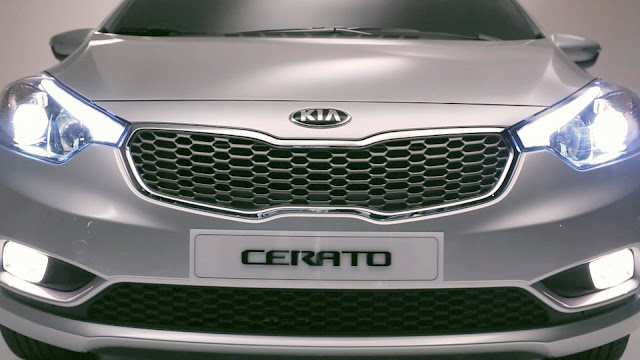The Australasian New Car Assessment Program (ANCAP) provides
consumers with independent and transparent information on the level of
occupant and pedestrian protection provided by different new car models,
in the most common types of crashes, through its star rating program.
ANCAP safety ratings are determined based on a series of internationally recognised crash tests, with vehicles awarded an ANCAP safety rating of between 1 to 5 stars indicating the level of safety they provide in the event of a crash and their ability, through technology, to avoid a crash. ANCAP is committed to raising the bar on vehicle safety.
ANCAP is supported by the Australian and New Zealand motoring clubs, Australian Federal, State and Territory governments, the New Zealand government, the Victorian Transport Accident Commission, NRMA Insurance and the FIA Foundation.
ANCAP buys and tests cars that are available to Australian and New Zealand consumers. Car manufacturers can examine the test cars before and after tests, and view the tests and results.
ANCAP uses a range of internationally recognised crash tests, undertaken by specialist laboratories.
These include:





Additionally, vehicles are required to have a minimum number of safety assist (collision avoidance) technologies as part of the overall safety assessment.

ANCAP safety ratings are determined based on a series of internationally recognised crash tests, with vehicles awarded an ANCAP safety rating of between 1 to 5 stars indicating the level of safety they provide in the event of a crash and their ability, through technology, to avoid a crash. ANCAP is committed to raising the bar on vehicle safety.
ANCAP is supported by the Australian and New Zealand motoring clubs, Australian Federal, State and Territory governments, the New Zealand government, the Victorian Transport Accident Commission, NRMA Insurance and the FIA Foundation.
ANCAP buys and tests cars that are available to Australian and New Zealand consumers. Car manufacturers can examine the test cars before and after tests, and view the tests and results.
ANCAP uses a range of internationally recognised crash tests, undertaken by specialist laboratories.
These include:
Frontal offset test
The frontal offset test simulates hitting another car of the same mass travelling at the same speed. 40% of the car, on the driver’s side, makes contact with a crushable aluminium barrier at 64km/h. Dummies in the vehicle indicate the likely injuries resulting from the crash test.
Side impact test
The side impact test consists of running a 950kg trolley into the driver’s side of the vehicle at 50km/h. The trolley has a crushable aluminium face to simulate the front of another vehicle.Pole impact test
In the pole test the car is propelled sideways at 29km/h into a rigid pole aligned with the driver’s head. The pole is relatively narrow, resulting in major penetration into the side of the car. Curtain airbags are particularly effective in reducing the chance of serious head injury in this type of crash.
Pedestrian test
The pedestrian tests are carried out to estimate head and leg injuries to pedestrians struck by a vehicle at 40km/h. These crashes represent about 15% of fatal crashes in Australia and New Zealand - as high as 30% in some urban areas.
Whiplash test
The whiplash test is conducted in two parts - a geometric measurement of the head restraint, and a dynamic test using the vehicle seat mounted to a test sled which simulates a rear-end crash equivalent to a stationary vehicle being hit at 32km/h.
Roof crush test (from 2014)
The roof crush test is conducted to ensure occupant survival space is maintained during a rollover crash. A solid metal plate is pushed against the front corner of the roof at a constant, slow speed and the resistance force measured.
Additionally, vehicles are required to have a minimum number of safety assist (collision avoidance) technologies as part of the overall safety assessment.
How are the tests scored?
ANCAP scores out of a possible 37 points.- The frontal offset and side impact tests can earn up to 16 points each
- At least 12.5 points in each of the frontal offset and side impact tests must be achieved to earn a 5 star ANCAP safety rating
- The pole test can earn an extra two points
- Intelligent seat belt reminders can also earn up to 3 bonus points to help improve a star rating
- At least 32.5 points must be achieved overall (with at least one point scored from the pole test) to earn a 5 star safety rating
- From 2008, cars must be equipped with Electronic Stability Control (ESC) to earn a 5 star ANCAP safety rating
- To achieve a 5 star ANCAP safety rating from 2013, cars must be equipped with ESC, 3-point seat belts for all forward facing seats, head-protecting technology (side airbags) for front seats, seat belt reminders for front seats and electronic brakeforce distribution (EBD) as well as 3 additional safety assist technologies (SAT) such as autonomous emergency braking (AEB), adaptive cruise control (ACC), blind spot monitoring (BSM) etc.
- The requirements for each star rating will increase year on year as identified in ANCAP's Rating Road Map. The Road Map progressively raises the bar for safety ratings for the forward-looking five-year period promoting continuous improvement in vehicle safety.
Other NCAPs
Similar crash testing programs are conducted in the USA, Japan, Korea, Europe, China, Latin America and South-East Asia however international crash test results are to be used as a guide only, as the structure and equipment of overseas models may differ from that of the Australian or New Zealand car of the same name.



















































